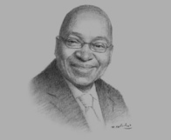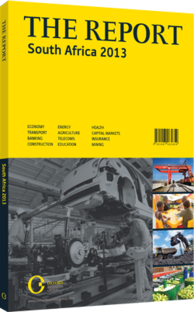OBG talks to President Jacob Zuma

Interview: Jacob Zuma
What role does Brazil, Russia, India, China and South Africa (BRICS) play on the world stage and how does South Africa benefit from the association?
JACOB ZUMA: BRICS has evolved beyond the original concept. It is no longer about simply quantitatively “counting numbers” such as growth rates and demographics, but has transformed into a diplomatic alliance among systemically significant economies. While BRICS members might differ in size and other factors, there are no challenges with regards to setting a common agenda, as all members understand the purpose and objectives of the association. The recent BRICS summit held in Durban emphasised the need to cooperate and work together in building the strengths of our respective economies, as well as the importance in identifying complementarities in growth sectors and to cooperate in building our collective industrial capacities. The BRICS trade ministers also committed to support Africa’s development agenda by strengthening their cooperation in the search for synergies for investment in the continent’s infrastructure, agriculture and manufacturing sectors. Africa is the world’s second-fastest growing region and offers the highest return on investment of any region. We are thus prioritising trade and investment relations with the continent, as well as promoting an ambitious regional integration and infrastructure development agenda. Activities for the 2013/14 financial year have already been approved by members. Having joined BRICS at a crucial time, South Africa aims to strengthen its contribution to global governance reform in a manner that gives a greater voice to developing countries. We also aim to build stronger economic links among the BRICS countries as they become increasingly key players in the global economy. As the only African member of the BRICS, South Africa seeks to articulate and promote the interests of the continent and contribute to the development of a more equitable world order, where Africa can assume its rightful place. As the largest and most industrialised and diversified economy in Africa, South Africa has a key contribution to make to the BRICS agenda, particularly since the BRICS countries are all heavily involved in supporting Africa’s economic transformation process through expanding trade and investment partnerships.
We recognise that that BRICS grouping offers an historic opportunity to champion a new paradigm for collaboration for equitable development by emphasising complementarities and building on our respective economic strengths. For example, a significant priority for South Africa’s term as BRICS’s Chair is to coordinate a joint trade study that identifies ways of promoting more value-added exports among the members; shifting the current structure of trade whereby exports of raw materials are exchanged for manufactured goods. South Africa will develop the terms of reference and the study will be undertaken in 2013 to be presented to trade ministers at the next summit in Brazil in 2014.
Exports to BRICS from South Africa have also grown significantly over the period 2008-12, with China the main driving force behind this increase, followed by India. While the financial crisis had an impact on South Africa’s imports from the BRICS countries, it is encouraging to note that South African exports were not affected. The share of BRICS trade within South Africa’s total trade has risen from 10% in 2005 to 19% in 2012.
How do you assess the global competitiveness of South Africa’s manufacturing industry?
ZUMA: South Africa’s manufacturing base has remained robust, despite the prevalence of various sector- and company-specific constraints on productivity and competitiveness. But it has become clear in recent years that external and internal factors, as well as short term and structural issues, have created a situation in which diversity and capacity have been placed under threat.
The first of these negative factors has been the global economic recession, which has led to the loss of 28m jobs worldwide, including 1m in South Africa. The recession had strong, adverse effects on demand from South Africa’s traditional trading partners and also lowered opportunities for our domestic exporters.
Second, the economic climate and global over-production, particularly in fast-growing developing countries, has led to the entry of a wide range of low-priced manufactured goods into the domestic market, negatively affecting domestic manufacturers.
Third, the cost of critical intermediate inputs such as steel, plastics and polymers into the manufacturing sector continues to constitute a major constraint to industrialisation. The enormous resource endowment in South Africa should provide the basis for a competitive advantage with respect to huge input costs into manufacturing. However, the practices of import parity pricing and excessive profit-taking give rise to a situation where what should be a competitive advantage actually turns into a disadvantage.
Under the Department of Trade and Industry (DTI), the government launched the Manufacturing Competitiveness Enhancement Programme in 2012, with a budget allocation of R5.8bn ($707m) over the period starting from the 2012/13 financial year to 2014/15. The programme aims to support the competitiveness of labour-intensive, value-adding manufacturing sectors to maximise employment and value-added potential. Other government efforts include the launch of the Clothing, Textile, Leather and Footwear Competitiveness Scheme, which has resulted in greater competitiveness in the sector. Footwear projects continue to see a rise in annual production from 52m shoes currently up to a projected 100m over the next three years.
Will tougher import protection positions be taken in the future for certain categories of goods?
ZUMA: Tariffs in South Africa are determined case-by-case and through detailed investigation and analysis by the International Trade Administration Commission of South Africa. There is no a priori presumption of the benefits or costs of maintaining either low or high tariffs, but the upper limits for tariff setting are determined by the obligations South Africa has taken in the World Trade Organisation and its bilateral trade agreements.
The approach to tariff setting in South Africa is strategic, selective and developmental. Tariff reform must be considered against the measure of building a diversified industrial economy capable of producing increasingly sophisticated, higher-value-added products and generating employment opportunities.
As a general guideline, tariffs on mature upstream input industries could be reduced or removed to lower the input costs for the downstream, more labour-creating manufacturing sectors. Tariffs on downstream industries, particularly those that are strategic from an employment or value-addition perspective, may be retained or raised to ensure long-term sustainability and job creation in the context of domestic production capabilities and the degree of trade and production distortions on these products at the global level.
To what extent can better collaboration benefit the country’s inclusive economic development?
ZUMA: South Africa has various fora where economic, social and labour issues are discussed. These include institutions such as National Economic Development and Labour Council (NEDLAC) to which key policies with socioeconomic implications are deliberated upon by the government, business and civil society.
NEDLAC could improve its effectiveness if it was financed to support the capacity of its less-resourced constituencies. Also, there is a need to put the national interest above sectoral interests. The DTI has introduced an industry forum initiative where government and business have more focused sector-specific engagement on a regular basis. This forum is a platform for all stakeholders to identify challenges, share sectoral information and collectively come up with possible solutions.
Other government departments have their own structures to complement NEDLAC, for example, the social dialogue initiative that has resulted in the skills accord and the procurement accord, among others.
You have reached the limit of premium articles you can view for free.
Choose from the options below to purchase print or digital editions of our Reports. You can also purchase a website subscription giving you unlimited access to all of our Reports online for 12 months.
If you have already purchased this Report or have a website subscription, please login to continue.

